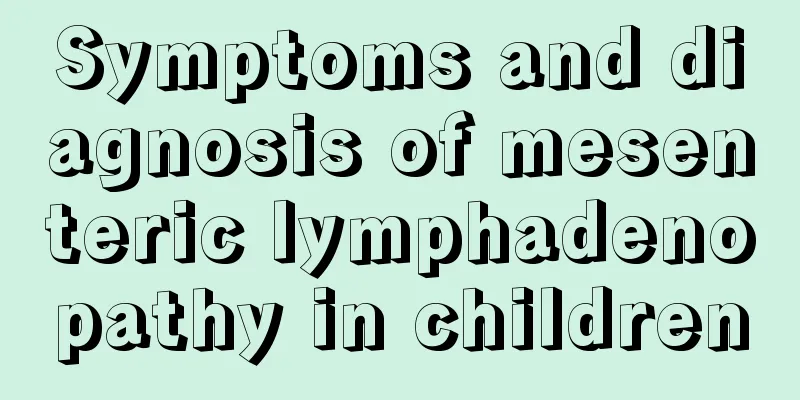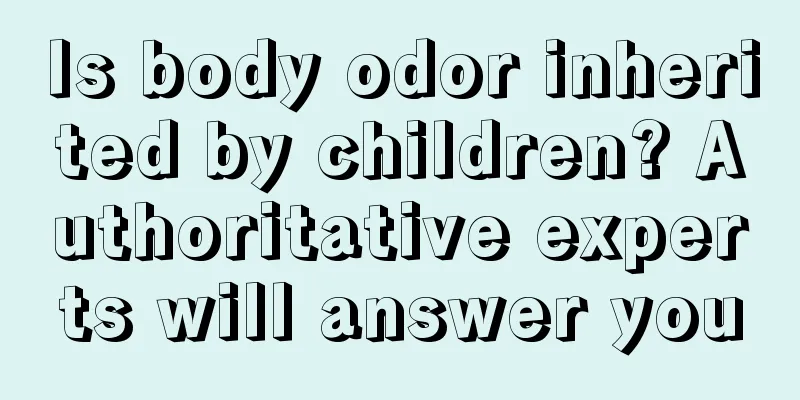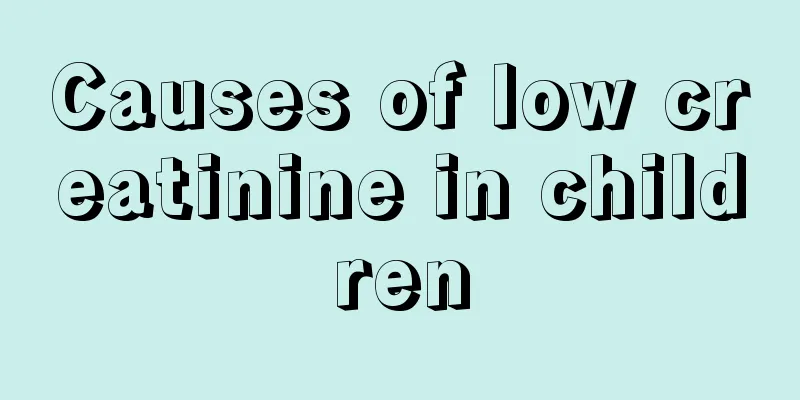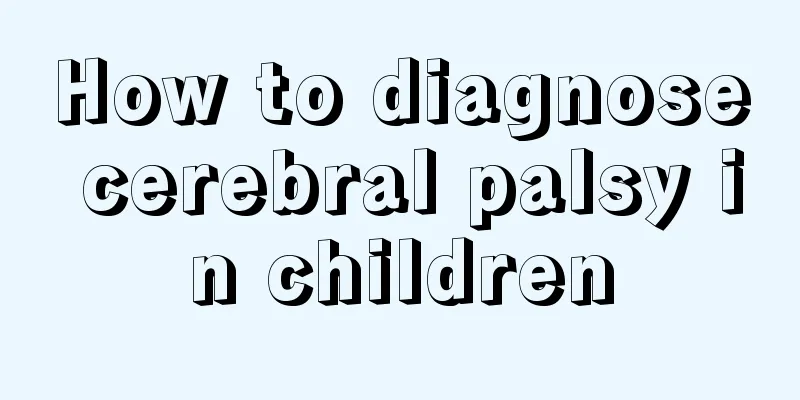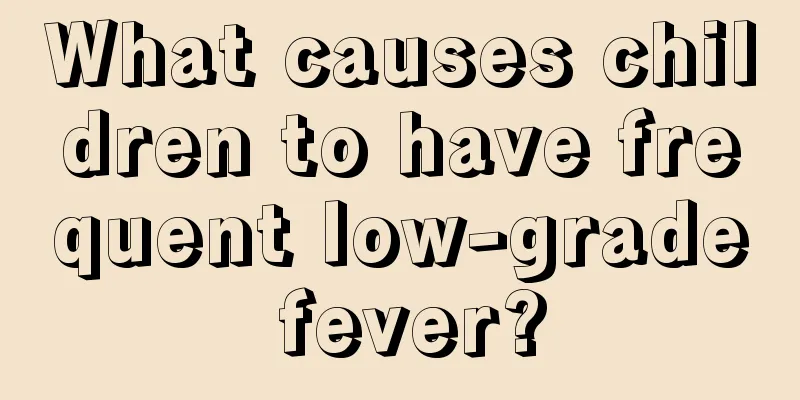Symptoms of coughing when a baby inhales foreign objects
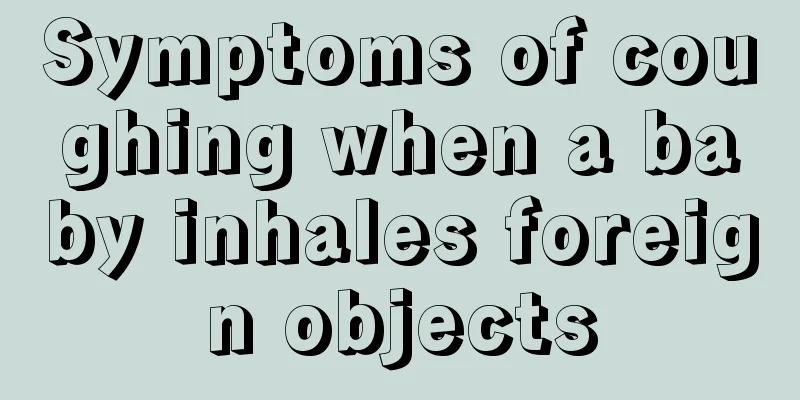
|
In life, we often encounter coughs caused by foreign objects entering our throats. Sometimes we will be choked and our faces will turn red, and we will feel very uncomfortable. This is especially likely to happen when we are talking or laughing while eating. We adults can solve this problem ourselves and express it, but for newborn babies, they cannot express it when they encounter this situation, and it will be very dangerous if they do not discover it in time. Therefore, we should learn more about the symptoms of babies' coughing due to inhaling foreign objects so that we can discover it in time. Clinical manifestations: Different symptoms may occur depending on the location of the foreign body. (1) Foreign body in the larynx: When a foreign body enters the larynx, reflex laryngeal spasm occurs, causing inspiratory dyspnea and severe irritating cough. If the foreign body stays at the entrance of the throat, it will cause pain or difficulty in swallowing. If the foreign body is located in the glottal fissure, a large one may cause suffocation, while a small one may cause choking, hoarseness, difficulty breathing, and laryngeal sounds. If the foreign body is in the form of a small membrane attached to the subglottis, there may only be hoarseness without other symptoms. Sharp foreign objects piercing the throat may cause hemoptysis and subcutaneous emphysema. (2) Foreign bodies in the trachea: When foreign bodies enter the airway, the patient will immediately experience severe choking, coughing, flushed face, shortness of breath, and difficulty breathing. As the foreign body adheres to the tracheal wall, the symptoms may be temporarily relieved; if the foreign body is light and smooth and moves up and down between the glottis and the bronchus with the respiratory airflow, an irritating cough may occur and a clapping sound may be heard; wheezing may be heard if there is a foreign body in the trachea, and the breath sounds of both lungs are similar. If the foreign object is large and blocks the trachea, it may cause suffocation. This situation is very dangerous as the foreign body may reach the glottis at any time and cause breathing difficulties or suffocation. Qingdao Medical College once encountered a 3-year-old child whose foreign body was a watermelon seed and the disease lasted for 10 months. During the 10-month period, there were three episodes of choking, all of which were relieved on the way to the hospital. This is because the watermelon seeds move up and down in the trachea and suddenly stick to the subglottis, closing the glottis fissure and causing suffocation. 3. Bronchial foreign body The early symptoms are similar to those of tracheal foreign body, and the cough symptoms are milder. Plant foreign bodies and bronchitis are often more obvious with cough and sputum. The degree of dyspnea is related to the location of the foreign body and the degree of obstruction. When a large bronchus is completely blocked, breath sounds disappear on the affected side when auscultated; when it is incompletely blocked, decreased breath sounds may occur. 2. Diagnosis 1. Medical history: Most patients have a clear history of foreign body aspiration and typical symptoms. Combined with lung auscultation and X-ray examination, a clear diagnosis can usually be made. 2. Clinical manifestations (1) Symptoms: If there is no obvious history of foreign body inhalation, the patient should be asked to recall whether he or she has experienced sudden severe choking, coughing, or short-term breath holding. In particular, if a child suddenly develops the above symptoms due to laughing or crying while eating, the possibility of a foreign body in the trachea should be considered. (2) Physical signs: Physical signs of foreign bodies in the trachea and bronchi are another important aspect of diagnosis. If a foreign body is large and movable in the trachea, a clacking sound can sometimes be heard in the trachea area of the neck. In some cases, this sound can be heard without a stethoscope. During palpation, there may be a slight vibration caused by the foreign body hitting the tracheal wall. The lesions caused by foreign bodies in the main bronchus are biased to one side. When auscultated, the breath sounds of the affected lung are reduced or disappear. When complicated by pulmonary inflammation, bubbling sounds can be heard. In most cases, wheezing can be heard, and there may be signs such as emphysema and atelectasis. 3. Auxiliary examination and diagnosis The history of foreign body aspiration should be placed first in clinical diagnosis. In the case of clear foreign body aspiration, bronchoscopy should be performed even if the clinical manifestations and auxiliary examinations are negative; conversely, for long-term lung inflammation, or when X-ray examinations and physical signs are consistent with foreign body, bronchoscopy should be performed even if there is no obvious history of foreign body. The condition of foreign bodies in the trachea and bronchi is complex and varied, and requires careful analysis and comprehensive judgment before a diagnosis can be made. Among the 411 cases reported by Qingdao Medical College, 60 had obvious medical history and physical signs, but no foreign bodies were found during the operation, accounting for 15% of the cases in this group. For patients in whom no foreign body was found during surgery and who still have cough and asthma after postoperative anti-inflammatory treatment, the diagnosis of foreign body cannot be completely ruled out and bronchoscopy is required if necessary. Because during bronchoscopy, the four walls are not fully viewed when the endoscope is inserted, the foreign body is not seen between the tracheal wall and the outer wall of the endoscope tube, causing it to slip through the net. |
<<: Early symptoms of onychomycosis in children
>>: How to deal with children's rotten teeth with only roots left?
Recommend
What's going on with white spots on my baby's fingers?
Every baby is very cute, and parents are particul...
How to treat Helicobacter pylori in children
Many patients will be diagnosed with Helicobacter...
What should I do if my 4-year-old child has a fever and stomachache?
Nowadays, most families have only one baby. Whene...
After the beginning of autumn, keep an eye on your baby and beware of five diseases
The beginning of autumn has just passed, and alth...
How to treat children’s allergic cough?
For parents, children are their darlings and the ...
Is it normal for a baby to have growing teeth first?
When the baby is just born, he will not have teet...
How to wear monk clothes for newborns?
Before the baby is born, it is generally necessar...
What to do if your baby has tonsillitis and fever
Tonsillitis is a very common disease in childhood...
Age of tooth loss in children
Babies usually grow deciduous teeth at a certain ...
What are the methods for treating tracheitis in children?
When children suffer from bronchitis, it will cau...
What to do if a 7-year-old child has tooth decay
Children usually go to kindergarten when they are...
Reasons why children have bad breath
Children's bad mouth is mainly caused by indi...
Why is the 9-year-old girl's urine test showing high red blood cell and bacterial counts?
Nine-year-old children are in the period of growt...
Introduction to Tonsillitis in Babies
Tonsillitis in babies may be caused by the mother...
One year and nine months old baby constipation
If you eat spicy food and don't drink much wa...

